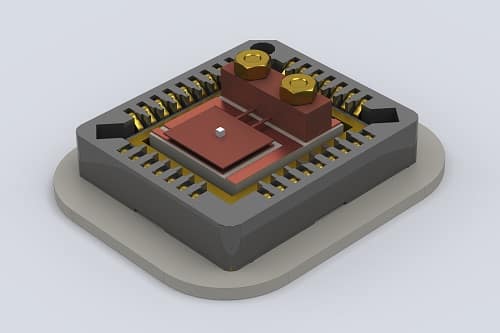The advancement in the development of novel materials for electronic components makes them less susceptible to interference

With the discovery of topological insulators, it was expected their unique electronic structure would help in the creation of energy-efficient information transmission for the development of new electronic components across a wide range of applications.
However, despite great efforts, the above aim could not be realised.
Until now…
Thanks to the discovery made by the research team at the Topology of Correlated Systems, Technical University of Munich (TUM), the wait is over.
A brief background
It is well known that electrons occupy various atomic orbitals at maximum energy levels in an atom, which varies on an electron’s direction of motion and wavelength.
At the same time, the energies of different orbitals can be identical depending on the direction of motion and wavelength. Particularly interesting are materials in which such similarity or ‘crossings/intersections’ appears at the level of the electrons responsible for conductivity, known as the Fermi energy level.
Topological insulators are materials whose electronic structure produces crossings exactly at the Fermi energy. These crossings are particularly stable because of the unique character of the electrons’ quantum mechanical wave function, which prevents cancellation through electron repulsion.
And because of the presence of Fermi levels in topological insulators, special properties related to the electrical conductivity occur, allowing electric charges and spin information to be transferred without any loss of energy.
The discovery of topological insulators uncovered many bulk materials with topological crossings between the energy bands that resulted in special properties for technological exploitation.
But the inability to predict whether the topological crossings in any of the known materials were exactly at the Fermi level proved a roadblock with respect to applications.
Recent breakthrough
TUM research team has now demonstrated that there are materials with planes through which the bands always pass in pairs – known as nodal planes that make localising crossings at the Fermi level easy. These are always exactly where the conduction band edges pass through such a plane.
“An essential prerequisite is the presence of so-called ‘non-symmorphic’ symmetries. In manganese silicon, this is a twist in the arrangement of the atoms,” says Andreas Schnyder, senior scientist at Max Planck Institute for Solid State Research.
“But that’s not all,” added Marc Wilde, professor at the Department of Physics, Technical University of Munich.
“We were also able to show that magnetisation in these kinds of materials can cancel the crucial symmetries and, as such, the nodal planes. The magnetisation direction is effectively like a pair of scissors that we can use to cut through the Möbius strip.”
“Using manganese silicon as an example together with the recently developed theoretical principles, we may now select and optimise materials in a concerted effort,” says Christian Pfleiderer, professor at the Department of Physics, Technical University of Munich.
“These new materials could enable not only much more energy-efficient electronic devices but also novel applications in which we use external magnetic fields to control the effects of magnetisation on nodal planes.”
He further adds, “In this way, these materials might even facilitate topological quantum computing in the future. Because of the characteristics of the crossing points, corresponding QBits would be much less sensitive to interference.”
This means that quantum computers built on this basis might not even require operating temperatures near absolute zero – a record achievement.
Read here for more








